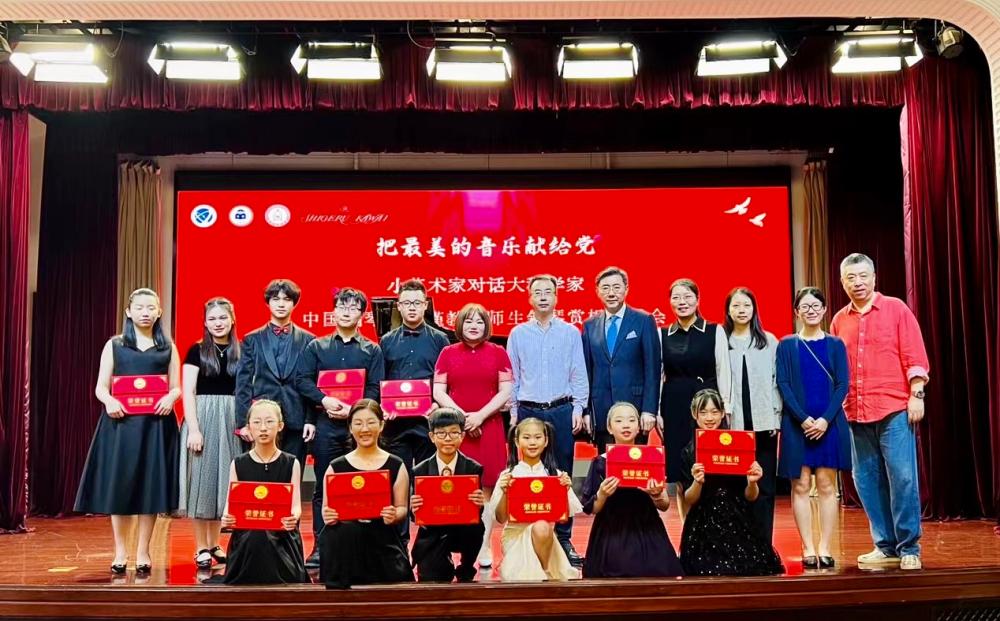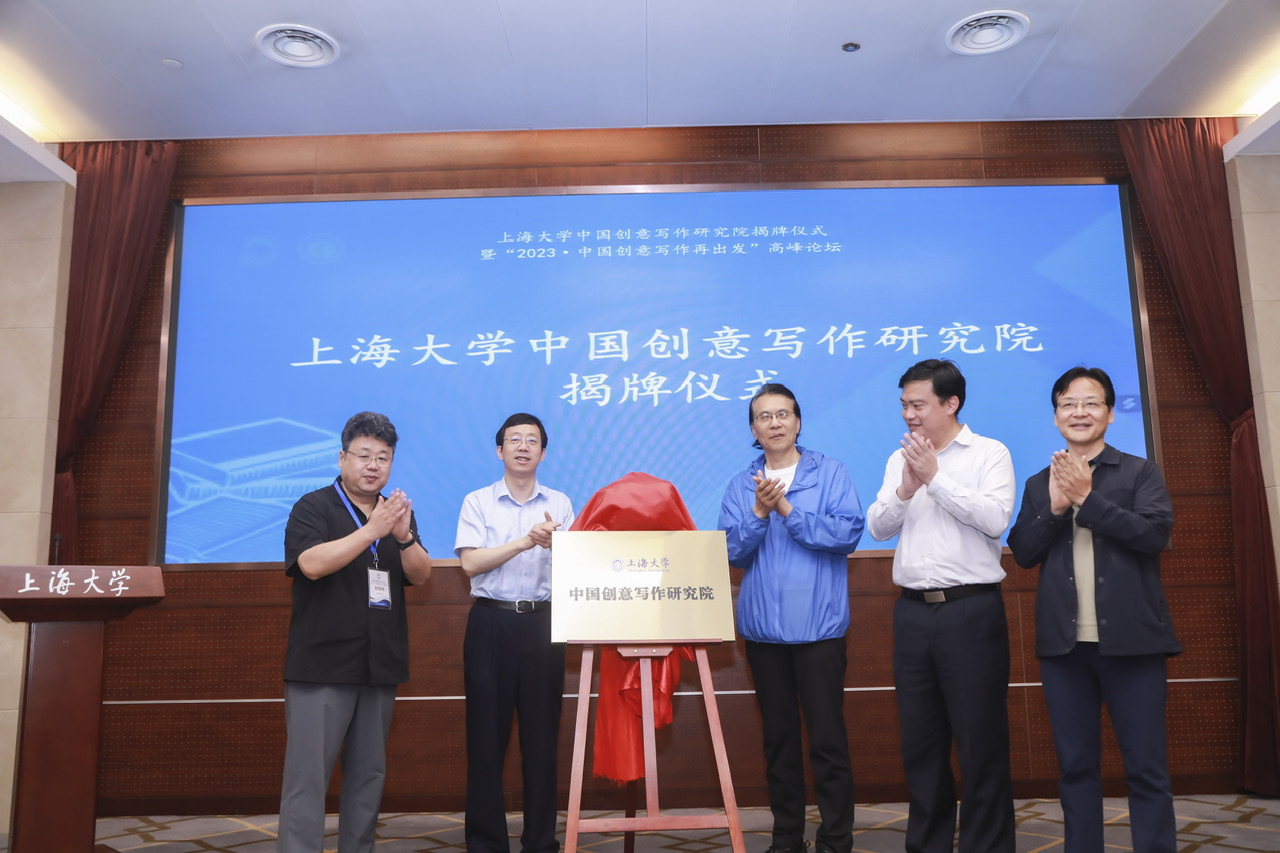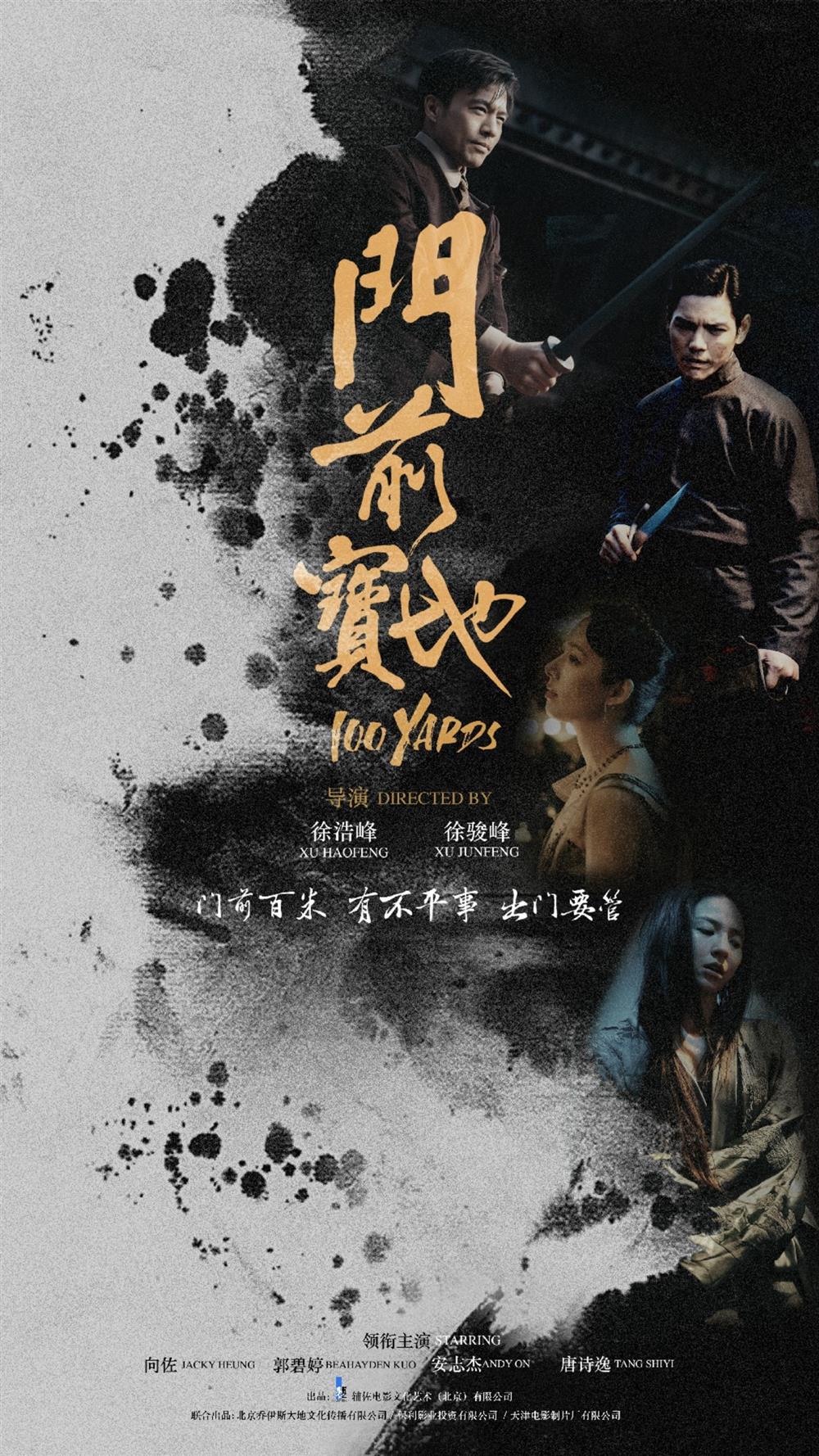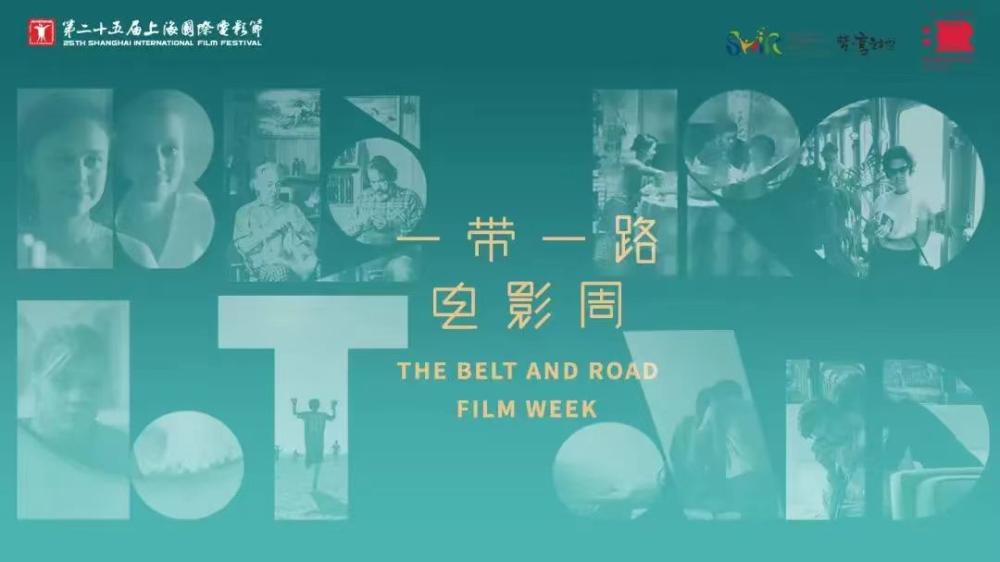This important exhibition displays a variety of precious originals, and helps us understand the struggle of the CPC Central Committee in Shanghai from the documents
"So many originals are eye-opening. Only when the collection is exhibited and used can it play a role and tell the red story of Shanghai well." On June 28, the "Red Traces: The Struggle of the CPC Central Committee in Shanghai in the Collection of Documents" theme exhibition opened at the Huaihai Road Library of Shanghai Library. 64-year-old collector Feng Jianzhong walked around the exhibition hall again and again. "This is a rare high-quality exhibition in recent years. It is very precious. I hope collectors who are interested in red documents will come to see it, and I hope more citizens, especially young people, will come to see it."

"Red Traces: Theme Exhibition of the CPC Central Committee's Struggle in Shanghai in the Collection of Documents" is on display at the Shanghai Library. Photo by Shi Chenlu
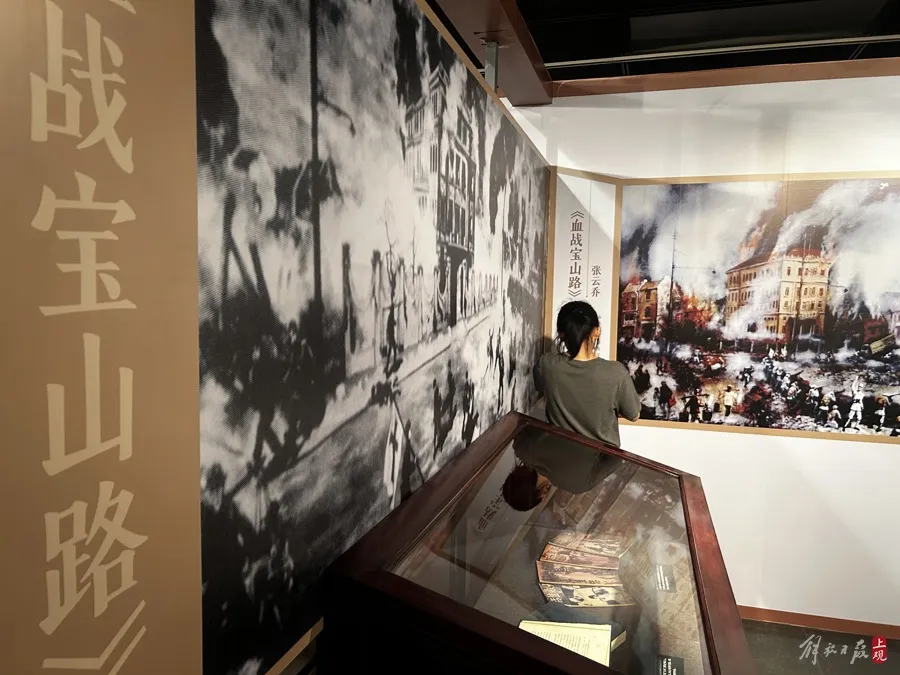
Xiang Yixuan, a sixth-grade primary school student from Yiwu, Zhejiang, who was traveling to Shanghai, took photos of the exhibits she was interested in with her phone watch. "The child said he would show them to his classmates when he got home. They had read a lot of the knowledge in textbooks, but they were more touched by the exhibits," said her mother, Ms. Xiang.

Xiang Yixuan, a sixth-grade primary school student from Yiwu, Zhejiang, who traveled to Shanghai, visited the exhibition. Photo by Shi Chenlu

Shanghai is deeply implementing the "Birthplace of the Party" red culture inheritance and promotion project, taking multiple measures to protect and utilize red resources. In-depth study and implementation of General Secretary Xi Jinping's important speech during his inspection of Shanghai, implementation of General Secretary Xi Jinping's important instructions and instructions on the major ideological and political courses, inheritance and promotion of the great party-building spirit, and continuation of the red bloodline, this theme exhibition launched on the occasion of celebrating the 103rd anniversary of the founding of the Communist Party of China is an effort to make red documents "live".
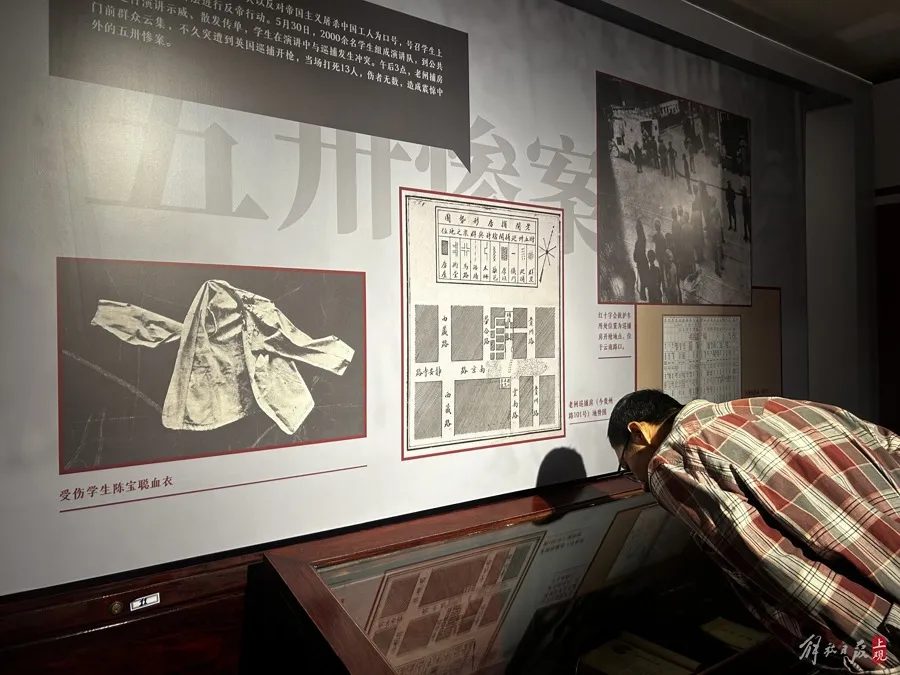
Shanghai is the birthplace of the Party, the starting point of its original aspiration, and the breeding ground of the great Party-building spirit. From the founding of the Communist Party of China in July 1921 to the relocation of the Provisional Central Political Bureau of the Communist Party of China to Ruijin in January 1933, except for a few short-term moves away from Shanghai, the leading organs of the Central Committee of the Communist Party of China were stationed in Shanghai for a long time, leading the Party's work and revolutionary struggles across the country, and achieved remarkable results. They withstood severe tests and laid an important foundation for the subsequent development and growth and leading the Chinese revolution to victory. This exhibition relies on the Shanghai Library's collection of more than 15,000 revolutionary historical documents, and selects more than 150 precious documents, of which more than 60 are exhibited for the first time. Focusing on the four aspects of "the founding of the Communist Party of China in Shanghai", "promoting the Great Revolution to a climax", "moving forward firmly under white terror", and "leading the struggle on the cultural and ideological front", it strives to let visitors truly feel the arduous and tortuous struggle history of the Party's early days through these books, newspapers, graphic materials, etc. that carry the advanced ideas and heroic struggles of the early Chinese Communists.
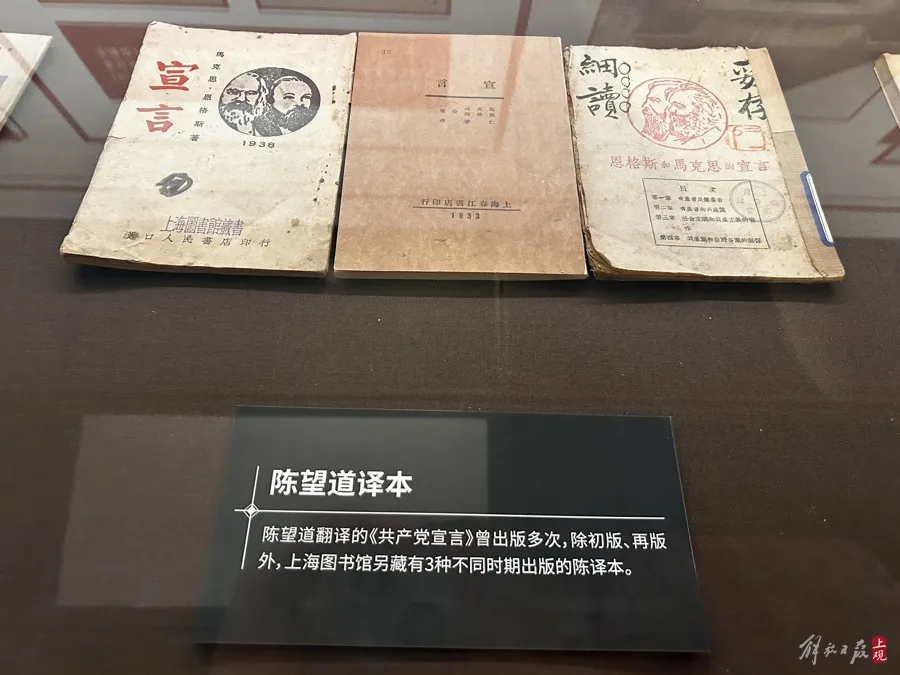
In addition to the historical documents that have been exhibited before, such as the first complete Chinese translation of "The Communist Manifesto", "The Plan of the Communist Party", "The ABC of Communism", "Lectures on Social Sciences", etc., the exhibition also displays a number of special collections that have never been publicly exhibited or are rarely exhibited, such as Hua Gang's translation of "The Communist Manifesto", Bo Gu's translation, the 100th anniversary commemorative edition, the "May 30th Incident Temporary Supplement" of "Eastern Magazine", disguised copies of "Chinese Language Lectures of the Civilian School Attached to Shanghai University", "Red Flag Weekly", "Lenin Youth", as well as various series of books published by People's Publishing House and Shanghai Bookstore, and translations of important Marxist-Leninist works.
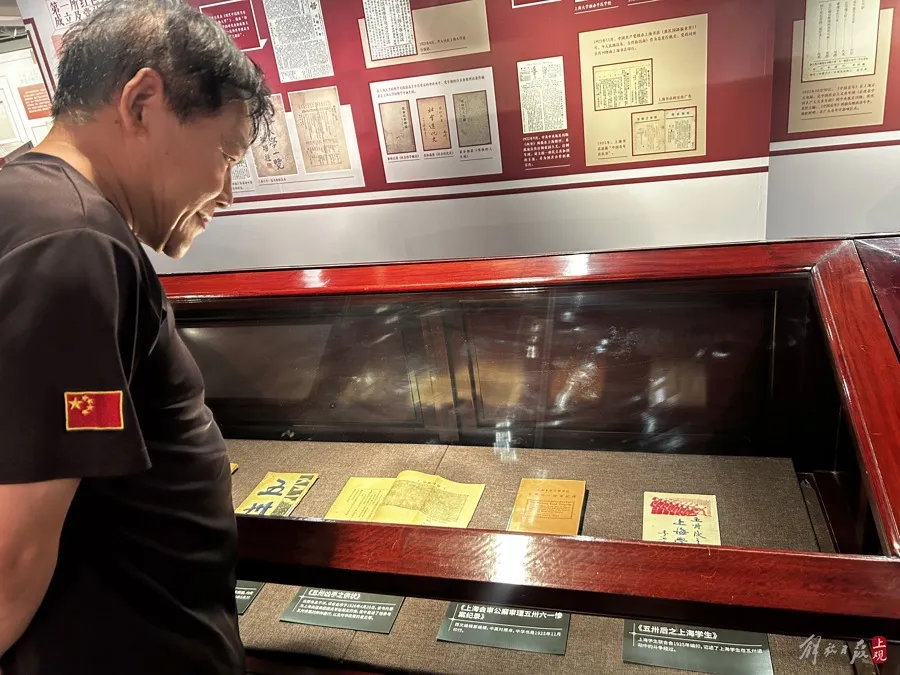
The reporter saw at the scene that there were 15 different translations of The Communist Manifesto in the display cabinet. In early 1920, Chen Wangdao completed the first full Chinese translation of The Communist Manifesto based on the Japanese version at his home in Yiwu, Zhejiang. It was printed and published by the Socialist Research Society in August. The title was mistakenly printed as "Communist Manifesto". It was sold out quickly after publication, and was reprinted the next month, with the printing error of the title corrected. The Communist Manifesto translated by Chen Wangdao has been published many times. In addition to the first edition and the reprint, the Shanghai Library also has three other translations of Chen from different periods, all of which are on public display for the first time.
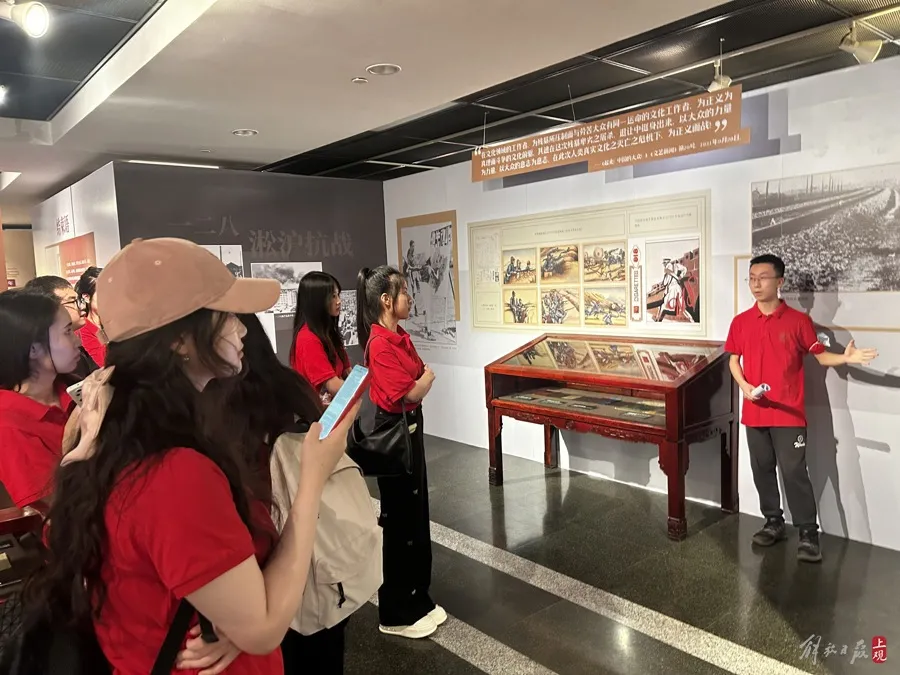
Three other translations of Chen Wangdao's The Communist Manifesto published at different times are on public display for the first time. Photo by Shi Chenlu
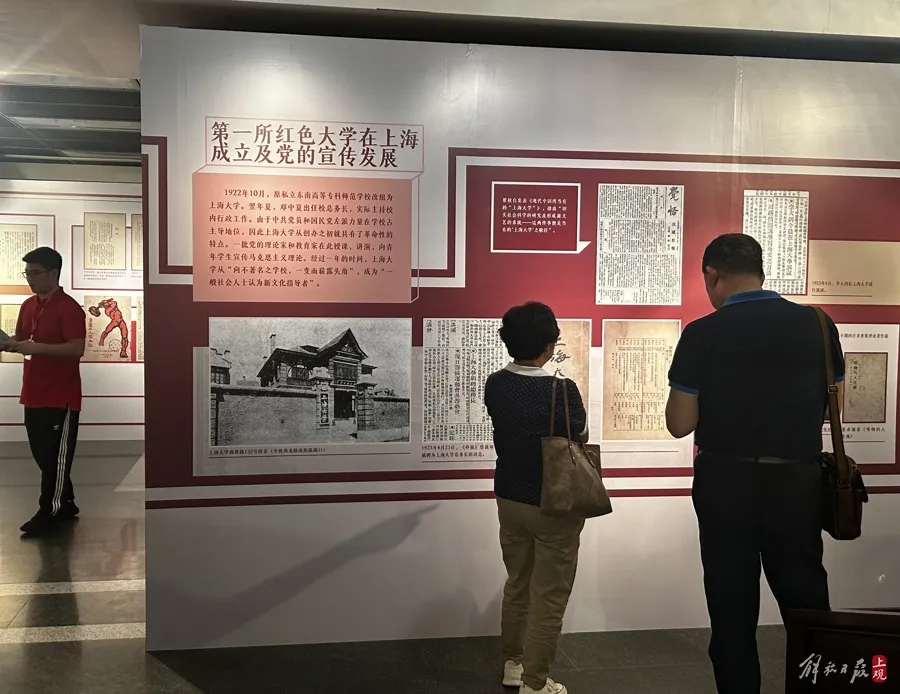
Feng Jianzhong leaned over the display cabinet and carefully examined the "May 30th Incident Temporary Supplement" of the Commercial Press's "Eastern Magazine". This was the only special issue published in Shanghai during the May 30th Movement. During the printing process, the power outage occurred and the paper in the warehouse could not be used due to a strike. The Eastern Magazine overcame the difficulties and published this supplement at the end of July 1925.
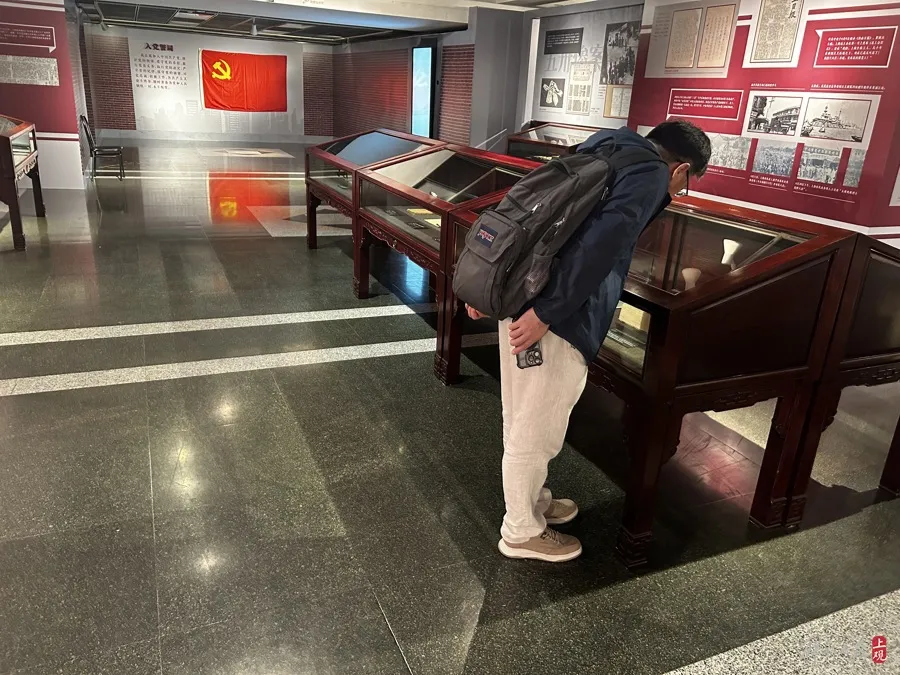
Collector Feng Jianzhong examines documents related to the May 30th Movement. Photo by Shi Chenlu
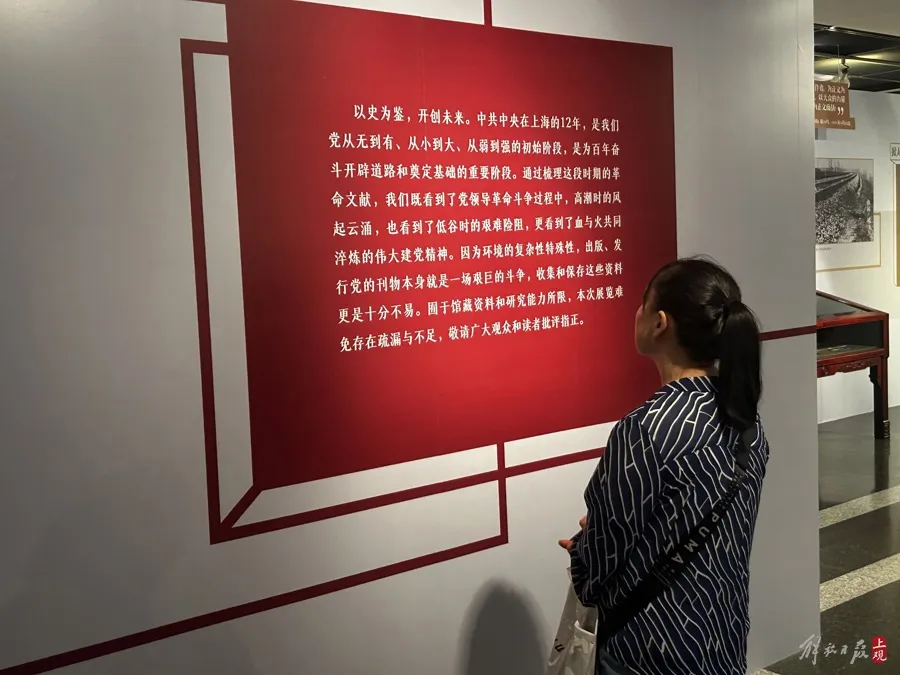
Chai Yuchuan, a junior student majoring in Marxist theory at East China Normal University, and 19 classmates signed up to serve as guides for the exhibition. On the first day of the opening, almost all the students arrived at the scene and served as the first group of listeners to each other to "train" for the subsequent explanations. Chai Yuchuan, who is in charge of the "Pushing the Great Revolution to a Climax" section, said that he had done a small project in school, "Research on the Spread of Marxism among Shanghai Workers and the Investigation and Utilization of Red Sites from the Perspective of 'Life' from 1920 to 1927", and visited the Gu Zhenghong Memorial Hall and the Huxi Workers Club, Huxi Workers Half-Day School and other red sites. "The Communists at that time paid great attention to mobilizing workers in life-like scenes, bringing workers together to chat and play chess, so that everyone could accept Marxist ideas more. Shanghai has a strong atmosphere of red culture. It is the responsibility of today's young students to contribute to the spread of red culture in social practice."

Students majoring in Marxist theory from East China Normal University served as guides for the exhibition. Photo by Shi Chenlu
The exhibition was jointly organized by Shanghai Library, Shanghai Oriental Propaganda and Education Service Center, and the School of Marxism at East China Normal University under the guidance of the Publicity Department of the Shanghai Municipal Committee of the Communist Party of China and the Party History Research Office of the Shanghai Municipal Committee of the Communist Party of China. The exhibition links the Shanghai Library's special resources such as the "Revolutionary Document Service Platform", "Origin of Shanghai·Journey of Original Aspiration", "Shanghai Red Resource List" and other digital humanities projects, and launches interactive multimedia projects such as theme chapter collection activities, "Revisiting the Party Membership Oath", and "Online Cycling to Check in Red Landmarks". At the same time, 10 representative documents were selected to form a series of short films "Party History Stories in Documents" for visitors to scan and watch.
The exhibition hall also has a learning classroom area, an oath corner, and an interactive experience area, providing an immersive learning space. Three episodes of micro-party lectures with the same theme produced by the School of Marxism at East China Normal University were played in the exhibition hall area.
During the exhibition and after the exhibition, the official website of Shanghai Library, new media platforms, and publicity platforms such as "Studying to Strengthen the Country" and "Red Road" will continue to launch online exhibitions, short stories about collection documents, and other exhibition promotions and exhibit introductions, such as "The Communist Manifesto: The Loudest and Most Powerful Trumpet to Awaken China", "The Woman of the Future: A New Wind of Women's Liberation", "Midnight: A Premonition of Dawn", "The Chinese Translation of Capital: A Relay Race for the Spread of Truth", etc., and will be pushed to citizens through the "Original Heart and Glorious City" column on the mobile TV of subways and buses and the "Oriental Community Digital Garden" platform covering the streets and communities throughout the city. The exhibition is free and open until August 5.

